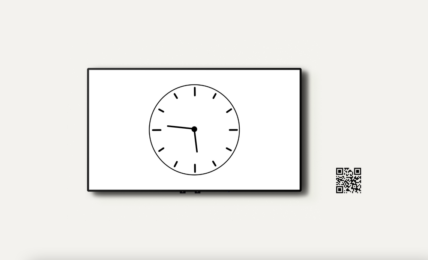“Each person is temporal, but the ideas that mankind creates are eternal. It perpetuates itself” – A.I. Alex, The Station 1920s.
In the grand scheme of time, humans have not existed long at all. Regardless, we have made irreversible changes to the Earth in the age of the Anthropocene. And for now, we don’t know how these summative actions will affect the wellbeing of those in the future.
Artist Vi Trinh explores the potential effects of humanity’s decisions on the planet in her interactive piece, The Station. The Station is inspired by the myth of the ancient Greek king Sisyphus. Sisyphus was clever and cunning. He attempted to escape multiple punishments and deaths, but ultimately Zeus condemned Sisyphus to roll a boulder up a mountain for eternity in the Underworld. The Station revolves around the Earth, which revolves around the sun. It is endless. It is timeless. Is this such a bad thing?According to Trinh’s simulation, The Station may just be the escape people need. “The Disaster” on Earth caused the world to be uninhabitable.
Alex: Welcome to the river.
Sabrina: It is said before the disaster, you could swim and do recreational activities on the river. The waters were clear and full of fish and creatures.
Alex: Now it is not the case. Any water above the ground was contaminated after the disaster.
-Alex & Sabrina, River Room, The Station
Right now, it is not hard to imagine global catastrophe, particularly in the wake of the COVID-19 pandemic. Most of Earth’s citizens have been governmentally ordered to stay inside until it’s safe for us to interact again. 2020 is not a year we will forget, and it is eerily peculiar that A.I. Alex’s narration parallels the world’s current condition. Upon further exploration of Trinh’s piece, it’s clear that people had to abandon Earth due to environmental issues that crossed the point of no return.
Let’s step into The Station for a moment. We begin in the space station bunker, and immediately must make a decision: left or right? Once the viewer leaves the initial room, each path feels random and perhaps even mysterious. We move through time and space as A.I. Alex and Sabrina narrate each room, which has been crafted by “The Creator” or “The Family.” As one may assume, these rooms attempt to encapsulate cultures, eras, natural spaces, and more through the eyes of The Family.
Sabrina: Welcome to the Islam.
Alex: You can’t say it like that.
Sabrina: Like what?
Aex: Islam is not a place or a thing, you can’t use the “the.” It is grammatically incorrect.
Sabrina: Well that’s how the creator said it – that is how we will say it. Grammatically incorrect or not
-Islamic Room, The Station
It is important to understand that the created bias represented in The Station is representative of the fabricated family responsible for creating this spatial bunker. In her Digital America interview, Trinh expressed that she intentionally left out non-Western cultures, “because the station [itself] is western centric” (Trinh, 2020). The A.I. absorb the Family’s inherent biases and expel these within their dialogue between each other as well as through general narration directed at the audience.
All of history is biased. The things we know about the people and places that came before us are immensely skewed representations of partial fact. It is impossible to absorb cultures and systems completely. Our knowledge of the past or of the unfamiliar is limited to the documentation of those who were/are allowed a voice. The Station pushes this concept further, such that the Creator fabricated an entire history based on their knowledge and biases. Alex and Sabrina then take the Creator’s chosen histories and adapt them to the rooms the viewer explores. Finally, the audience leaves the tour with an understanding of the entire “history” of the Earth.
Of course, The Station is focused on the Anthropocene Era. We do not see reflections of Earth as it was 300 million years ago. We see the Creator’s take on the 1900s, ancient Egypt, what’s left of futuristic Scotland, and so much more. Thousands of years condensed into 43 rooms. We leave, still limited. And we’re stuck, exploring fractured images, running through a barren station suspended from earth, perpetually floating through space in an infinitesimal vessel.
In this way, The Station mimics Sisyphus’s infamous punishment. The Earth is strong, but it’s tormented by the weight of humanity’s resource consumption. Perhaps The Station is a wake-up call to conserve and preserve earth’s natural landscapes and resources, before it’s too late.
Near the event of the disaster the world became less and less hospitable, so people had to live
entirely indoors. In this way, post-post contemporary projectionism became a popular way for people
to still experience the outside world
– Alex, 2020s
I implore you to find every room in The Station. Explore. Imagine. Soak up the artificial sun on The Mountain. Climb the fabricated trees. Get lost.
Check out The Station.
Check out Vi Trinh’s Q&A.
:::

Gabi Williams is currently a senior majoring in Geography and Environmental Studies, and minoring in Archaeology. She backpacked in the Uttarakhand Himalayas in 2018 and is interested in exploring extreme landscapes in her spare time. Gabi is planning to go into sustainable urban planning and incorporating natural spaces into populated areas.
Plastystopia | Roya Ebtehaj →



